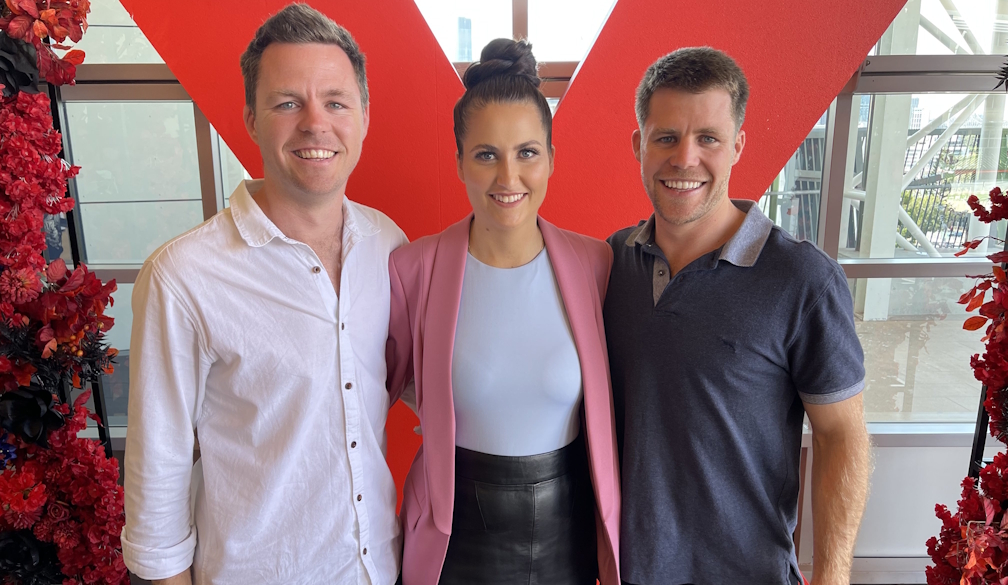The Key To Achieving Big Goals

We’ve all set big goals for ourselves at some point—whether it’s getting out of debt, buying a house, or even something as personal as getting fit. However, many of us fall short of achieving those goals. What sets successful goal-achievers apart from the rest? One of the simplest, yet most effective, strategies is writing down your goals.
Studies have shown that writing down goals increases the likelihood of achieving them. In fact, people who write down their goals are statistically more successful than those who don't. Writing them down not only helps solidify your intentions but also makes them more tangible. Let’s explore how you can use this powerful technique to achieve your biggest goals. Whether you're aiming to tackle financial goals—like managing debt, where you may be concerned with the current average APR on your credit cards—or other dreams, writing your goals is the first step toward making them a reality.
Why Writing Goals Works: The Science Behind It
There’s a reason why writing down goals has been scientifically proven to improve goal achievement. The act of writing engages both your brain and body in a way that verbalizing or just thinking about goals doesn’t. By committing to paper, you make your goals more concrete. It’s no longer a vague hope, but something specific and real.
Memory and Focus
Writing things down helps you commit them to memory. In studies, participants who wrote down their goals were able to focus better on what they wanted to achieve. By physically putting your goals on paper, your brain begins to pay more attention to them. This helps you stay focused, even when distractions arise.
Also, the simple act of writing activates a part of your brain that encourages action. It’s like setting the stage for success, preparing you mentally and emotionally to take the necessary steps to achieve your goals.
Accountability
Another reason why writing down goals works so well is that it creates a sense of accountability. By seeing your goals written in front of you, you’re constantly reminded of what you want to achieve. This increases motivation and reduces procrastination. You are more likely to stick to a plan when you can visually track your progress.
How to Write Goals That Actually Work
So, how should you write your goals to ensure they have the best chance of success? The key is to make them clear, actionable, and positive. Let’s break down the process:
- Start Each Goal with “I Will”
When you write down your goals, begin each statement with “I will.” This wording is powerful because it turns your goal into an active commitment rather than a passive desire. It’s a simple change, but it transforms the goal from something you might do into something you are going to do.
For example:
- “I will pay off my credit card balance by reducing my monthly expenses.”
- “I will save $200 a month for my emergency fund.”
Starting with “I will” encourages you to take ownership of your goals and reinforces your responsibility toward achieving them.
- Use Positive, Action-Oriented Language
Instead of focusing on what you don’t want, focus on what you do want. Positive language keeps your mindset focused on possibilities rather than limitations. For instance, instead of saying “I will stop spending money on things I don’t need,” try “I will prioritize my essential spending and save for my goals.”
Positive language is motivating. It reminds you of what you’re actively working toward, which keeps your energy high. The goal is to visualize your success, not your struggles. This kind of mindset boosts your motivation and drives you toward your goal with determination.
- Make Your Goals Specific and Measurable
Another crucial step is making sure your goals are clear and measurable. It’s easy to say, “I want to save more money” or “I want to be healthier,” but these types of goals are vague and lack direction. Instead, make your goals specific and measurable.
For example:
- “I will save $1,000 by the end of the year by setting aside $85 a month.”
- “I will reduce my current credit card debt by 20% over the next six months by cutting back on non-essential purchases.”
When you set clear numbers and timelines, you give yourself concrete targets to aim for. You can easily track your progress, which helps keep you motivated.
Breaking Down Big Goals into Smaller, Achievable Steps
While setting clear goals is essential, breaking them down into manageable steps is just as important. Big goals can often seem overwhelming, which can lead to procrastination. Breaking them into smaller tasks makes the process more digestible and less stressful.
Make It a Step-by-Step Plan
Take a large goal and break it into smaller, actionable steps. For example, if your big goal is to pay off a large amount of credit card debt, create smaller steps to help you achieve that:
- Step 1: Assess your current credit card balances and interest rates.
- Step 2: Identify areas in your budget where you can cut back to free up more money.
- Step 3: Set up an automatic payment plan to make consistent payments each month.
- Step 4: Track your progress and celebrate small milestones along the way.
By breaking a goal down like this, you not only make it less overwhelming but also build momentum with each small victory. Each step completed gets you closer to your big goal.
Tracking Progress and Adjusting Goals
Once you’ve written your goals and broken them into steps, the next part is monitoring your progress. Regularly tracking where you stand helps you stay on track, but it also gives you the chance to adjust your strategy if needed. Life is unpredictable, and sometimes you’ll need to make tweaks to your original plan.
Review and Adjust Your Goals
Review your progress regularly to see if you’re on track. If you’re not seeing the results you expected, ask yourself why. Are you putting in the time and effort needed? Do you need to adjust your approach? It’s okay to make changes as long as you’re still working toward your ultimate goal.
For example, if you’re not hitting your savings target because your expenses are higher than expected, you might adjust your budget or find ways to increase your income. The key is to remain flexible while staying committed to the goal.
Final Thoughts: Keep Moving Toward Your Goals
Achieving big goals is a journey that requires commitment, planning, and perseverance. Writing your goals down is one of the most effective steps you can take to increase your chances of success. By starting each goal with "I will," using positive language, making goals specific and measurable, and breaking them into manageable steps, you set yourself up for success.
Remember, small progress adds up to big results. By staying focused and tracking your progress, you’ll keep moving toward your goal, no matter how big it seems. Don’t let the size of the goal discourage you—stay committed, and you’ll see the rewards of your hard work over time.









